Copy First or Design First? How to Align Copywriting and Graphic Design for Better Results


Wondering whether copy or design should come first in your marketing projects? This article shows you how to align copywriters and graphic designers for smoother collaboration, fewer revisions, and stronger results — complete with practical tips, real-world examples, and common pitfalls to avoid. Perfect for teams tired of endless back-and-forth and ready to streamline their design process.
Great marketing happens when words and visuals work together. But too often, they don't.
Designers wait to write copy, and copywriters struggle to fit text into rigid layouts. Clients expect one person to handle both graphic design and copywriting skills. The result? Frustrating revisions, inconsistent visuals, and disjointed branding.
The solution comes down to two collaboration models:
Most teams rely on the second approach, but many projects require a mix of both. At TodayMade, we've seen firsthand how the right content strategy and clear workflows can transform a chaotic design process into efficient collaboration. Below, we'll share practical examples, actionable tips, and key insights to streamline your workflow, reduce revisions, and ensure your message resonates effectively with your target audience.
Marketing projects usually begin with good intentions, but somewhere along the way, things start falling apart. Writing copy doesn’t align with visuals, graphic designs don't reflect core messages, and endless revisions quickly become exhausting. What causes these breakdowns? Let's explore the most common issues and practical solutions.
Writers and graphic designers often operate in separate silos. The writer begins without fully understanding visual constraints, while the graphic designer lays out a page without knowing exactly how much text to expect. This disconnection leads to last-minute scrambling and compromised outcomes.
Solution: Early collaboration. Instead of treating visuals and text as separate tasks, teams should align from the outset. Sharing project briefs, leveraging real-time collaboration tools like Figma or Notion, and holding kick-off meetings will ensure both sides understand each other's needs clearly before before work begins.
As one Reddit user aptly explained: “Skills can complement each other. Some great headlines have come from my art directors. Some great visual ideas have come from writers—they just couldn't actually create it.” Leveraging both skillsets results in stronger, more cohesive work.
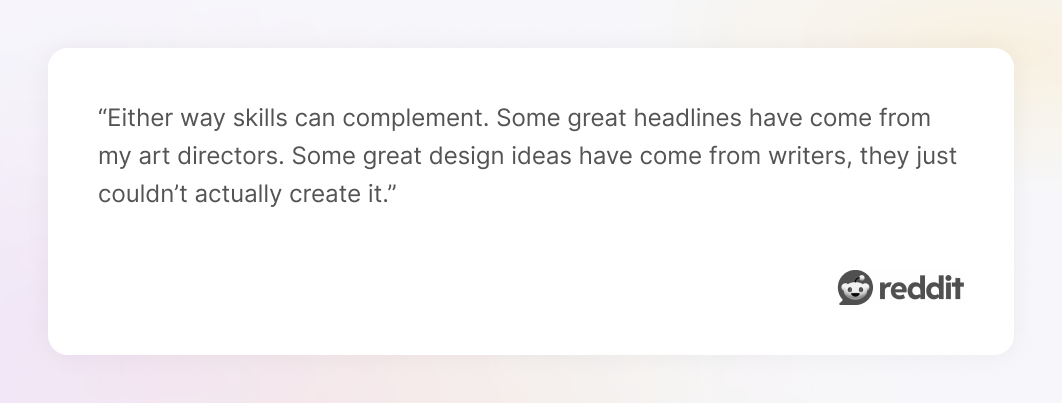
Many teams insist on finalizing copy first, compelling graphic designers to accommodate the text. Others advocate creating the visual layout first, requiring copywriters to adjust their words accordingly. In reality, neither method is flawless.
Solution: Choose your approach based on the project's specific needs. While simultaneous evolution of content and visuals is ideal, it's often impractical. Most teams adopt an iterative process, first writing copy, followed by visual design, and then structured revisions. The key lies in clearly defining and adhering to your chosen method consistently.

Projects only progress smoothly when there's a structured feedback system. Without it, teams get stuck in endless revision loops, tweaking text and visuals without clear direction. This results in frustration, wasted resources, and a final product that feels disjointed.
Solution: Establish clear revision rounds. For instance, instead of letting feedback trickle in continuously, set specific review stages: copy is reviewed once, visuals are reviewed once, and the final tweaks happen collaboratively. Defined reviews significantly streamline project workflows.Unrealistic expectations from clients.
Clients don't always understand the difference between copywriting and graphic design. Some assume designers will "just write the words," while others expect copywriters to tweak designs. This confusion leads to delays, miscommunication, and frustration for everyone involved.
The best way to prevent this is to set expectations early. Clearly define roles, responsibilities, and workflows before starting a project. Clients who understand the process are less likely to ask for impossible last-minute changes, including around pricing questions such as how much do illustrations cost.
Collaboration between a copywriter and graphic designer fails when teams work in isolation or lack a structured process. But with the right approach, these two disciplines can create marketing materials that feel seamless, compelling, and frustration-free.
Clearly distinguishing between the roles of graphic designers and those who write copy helps streamline collaboration and enhances outcomes. Both roles carry distinct responsibilities, skills, and deliverables, and understanding their differences ensures efficient, productive teamwork.
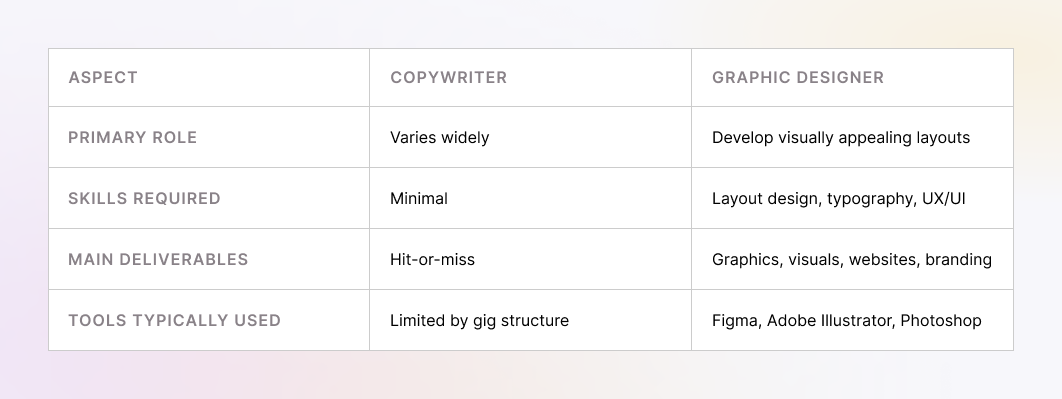
Copywriters focus on crafting compelling written content designed to attract, inform, and persuade your target audience. Their expertise lies in storytelling, clear communication, and understanding user psychology. They primarily use tools like Grammarly and Google Docs to refine their messages, ensuring clarity and impact.
Graphic designers, on the other hand, prioritize visual aesthetics and usability. Their main goal is creating appealing and functional visual content that complements the written copy. Designers typically rely on tools like Figma, Adobe Illustrator, and Photoshop to build visual assets and interfaces that effectively convey the brand's message and identity, supporting both visual storytelling and a strong brand visual identity.
Recognizing these distinctions enables each professional to leverage their specific skills more effectively, resulting in a smoother workflow, fewer revisions, and enhanced outcomes.
Now that we've clarified these core differences, let's dive deeper into common collaboration issues and practical strategies for resolving them effectively.
Effective collaboration between web designers and copywriters often faces common obstacles. By proactively identifying and addressing these challenges, you can achieve clearer communication, reduce wasted resources, and ultimately attract more clients with a cohesive brand online presence.
Problem: Designers struggle with unpredictable copy length on a page or website, leading to layouts that don't align with the intended user-friendly experience.
Solution: Engage in collaborative briefs and early wireframe discussions, including a detailed brain dump session. Content strategists, UX writers, and designers should collaborate to outline user needs and agree on clear length guidelines before writers start writing. Using bullet points to summarize key content helps designers visualize the necessary space, avoiding layout issues later.
Example: When a web designer clearly communicates space constraints in an initial meeting, the copywriter can write content that seamlessly fits the intended visual design, ensuring that your marketing material resonates with your target audience.
Problem: Copywriters often aren’t fully aware of visual layout constraints, leading to friction and repetitive revisions when their content doesn't align with the design, creating frustration and wasted effort.
Solution: Set up shared documentation and utilize tools like Notion or a free Medium app to ensure constant access to updated project constraints. Conduct comprehensive kick-off meetings, involving both content strategists and brand designers, to define explicit visual limitations and expectations. When everyone clearly understands the boundaries, they can produce more aligned and effective copywriting that fulfills your overall business goals and establishes a stronger emotional connection with your customers.
Example: Establishing guidelines for character limits in headlines, CTAs, and error messages ensures the copywriter's writing complements the design rather than competes against it. This approach prevents costly redesigns and contributes to a cohesive and compelling user experience.

By addressing these common issues, your team gains a laser focus on unified, collaborative marketing strategies that clearly define roles, utilize everyone's great skill, and enhance the synergy between design and copy. Such structured collaboration not only improves your team's efficiency but also positively impacts your visibility on search engines, helping your business consistently meet and exceed your target audience expectations.
Learning from industry leaders offers valuable insights into what makes collaborative marketing truly successful. Real-world examples show how strong partnerships between web designers, brand designers, and content strategists lead to consistent messaging, streamlined workflows, and outstanding user experiences, as seen in pop up examples and the best infographic examples.
Apple exemplifies this harmony with its minimalist visual design paired with concise, impactful writing. Every page of their website reflects a deep understanding of user needs, refined through precise messaging and clean layouts. Apple’s teams operate with a laser focus, ensuring that content and design evolve together, resulting in a seamless experience that consistently ranks well in search engines.
.png)
Mailchimp takes a process-driven approach. Their detailed style guide — available through internal tools and even platforms like their free Medium app — defines expectations around tone, copy length, and even how to handle error messages. This clarity empowers their UX writers, content strategists, and brand designers to collaborate efficiently while aligning their efforts with key business goals. The result is a highly adaptable and consistent.
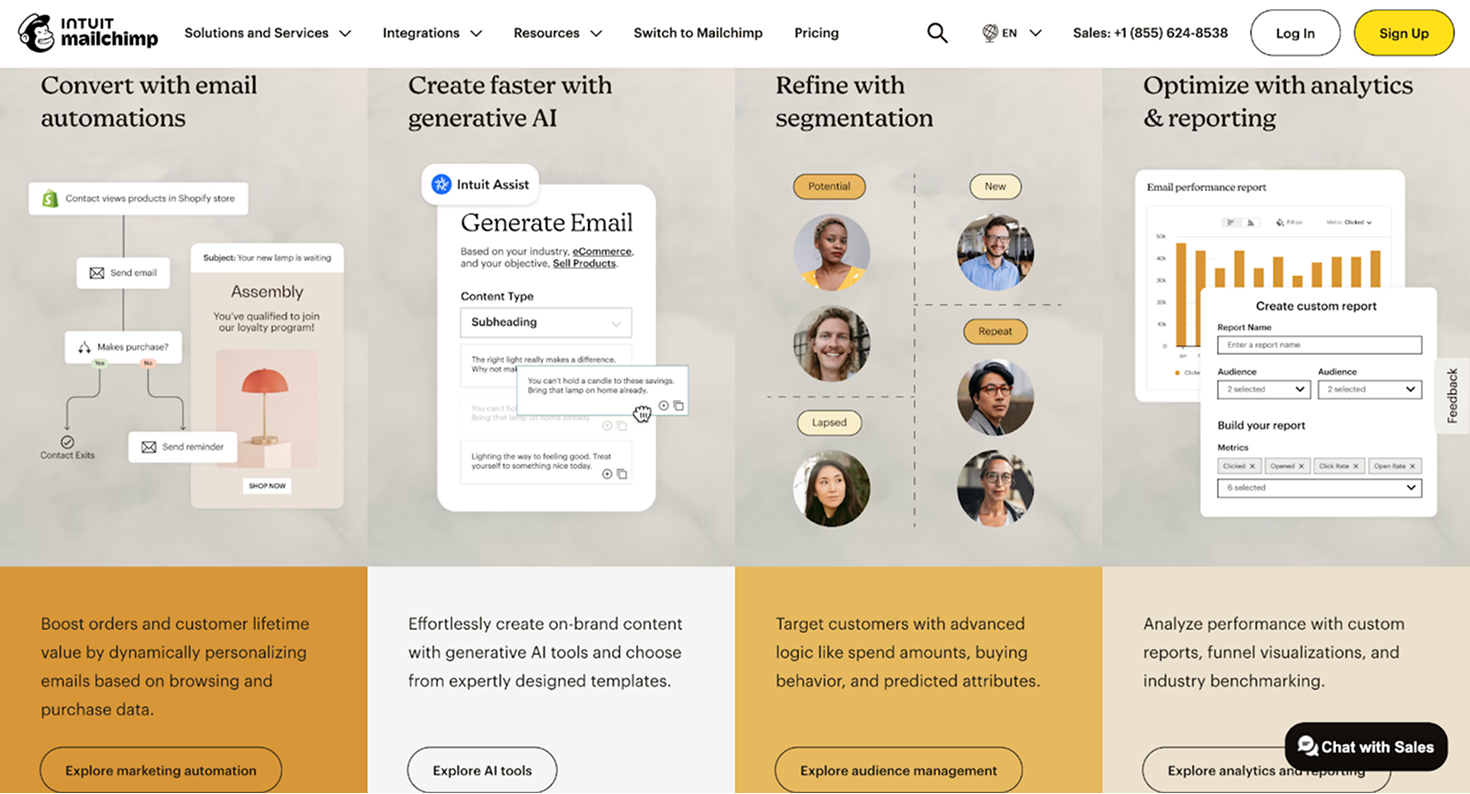
These examples demonstrate that successful collaboration doesn’t happen by accident—it’s built on structure, clear communication, and mutual understanding. By applying these principles, your team can improve efficiency, strengthen strategic alignment, and deliver cohesive digital experiences that serve both user needs and long-term business objectives, whether in conceptual design or during a brand refresh.
Implementing practical and actionable strategies can significantly enhance your team's workflow and ensure that copywriting and design effectively complement each other.
By incorporating these quick, practical tips into your workflow, you ensure that copywriting and graphic design work seamlessly together, producing cohesive, compelling, and effective marketing materials, and even inspiring fresh creative presentation ideas.
Inspired by these examples, here are some quick, practical tips you can implement immediately to ensure your team’s collaboration remains productive and impactful.
When it comes to aligning text with visual design, teams typically follow one of two collaboration models. Understanding these approaches is essential to building a more cohesive content strategy and producing results that connect with your target audience.
In a perfect world, copywriters and designers begin each web design project together. They brainstorm as a team, shape the content strategy early on, and build both visual design and messaging in sync, ensuring consistency even in brand iconography.
How it works:
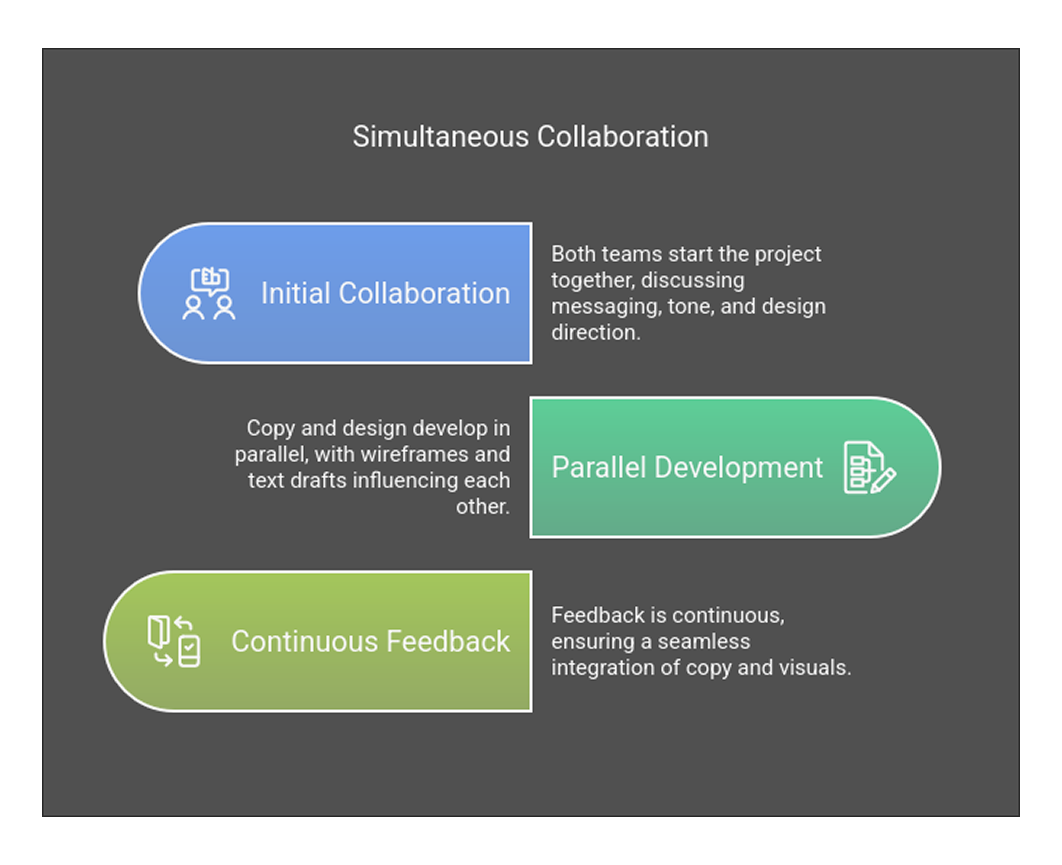
Most teams don’t have the luxury of real-time collaboration. Instead, they follow an iterative process, where copy comes first, design follows, and both go through structured revisions. It’s not as seamless, but often works well. Here is how:
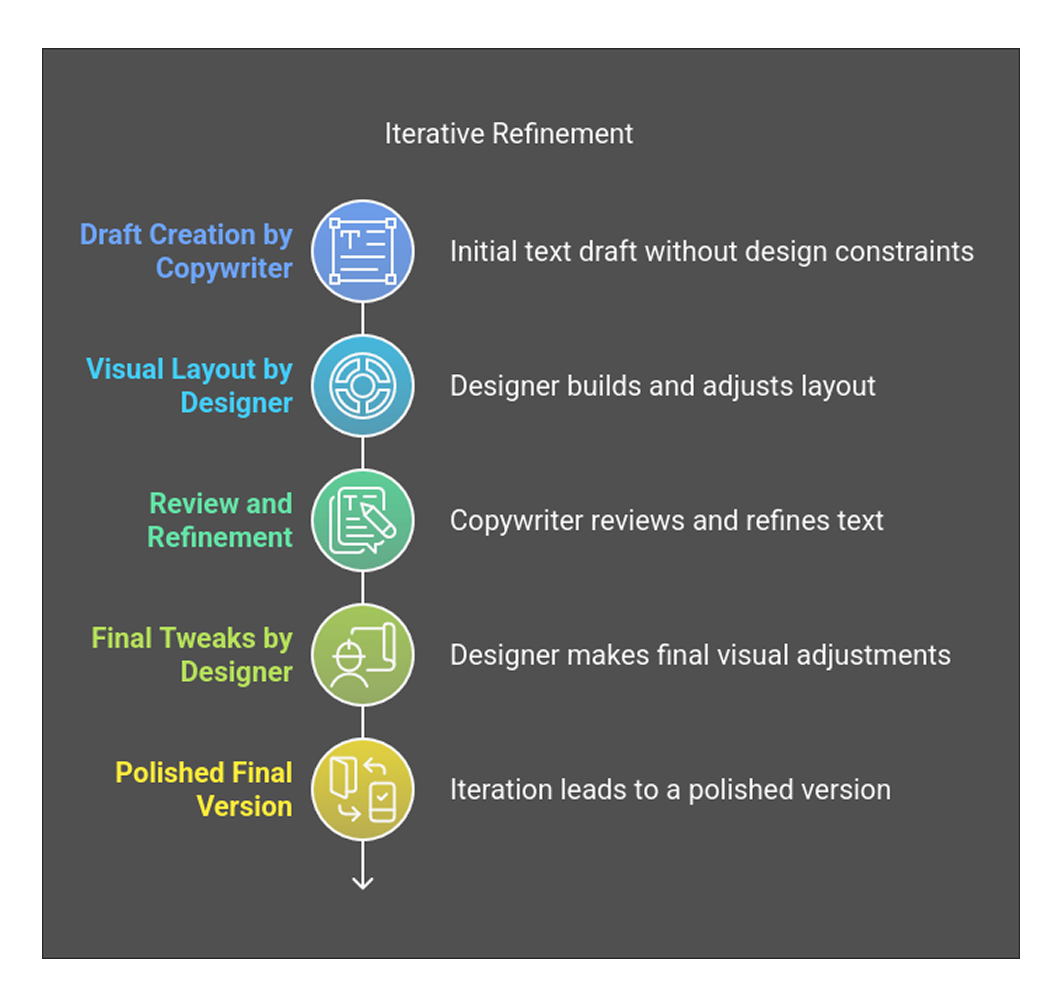
Cons:
If your team needs structure but can’t commit to full co-creation, this iterative method makes the most sense. With just enough collaboration and clear ownership, it leads to cleaner execution and fewer headaches.
Whether you lean toward one model or mix both depending on the project, the key takeaway is this: Success relies on clarity, consistency, and shared understanding. The collaboration between writers and designers isn’t just a handoff—it’s the secret sauce behind every great website, business, and brand strategy.
When copywriters and designers collaborate, even the smallest misalignment can lead to missed deadlines, disjointed messaging, or costly revisions. But with the right practices, your team can avoid bottlenecks and build a workflow that delivers effective copy, purposeful visual design, and a consistent brand strategy across every page and website.
Start with tools that support real-time communication. Tools like Figma, Notion, and Miro allow teams to exchange feedback directly on the design or copy. Instead of waiting for final drafts, both writers and designers can contribute as the work evolves.
This collaborative environment supports content strategy by ensuring that both messaging and visuals are aligned from the start. It also reduces the risk of having to force content into an unsuitable layout—something that rarely makes sense for either the user or the business.

Starting a project with clear expectations prevents confusion later. A quick copy-design brainstorming session helps define:
Great design enhances great copy, but only when both work toward the same goal. Designers should grasp the core message before creating layouts, and copywriters should understand the visual direction before writing.
To ensure consistency, teams can use shared style guides and creative briefs that define brand voice, typography, color schemes, and content structure. When done right, every text and visual element feels like part of a unified story.
Take Mailchimp’s style guide, for example. It details everything from language and tone to web elements and design styles, ensuring that any new team member can quickly understand and maintain brand consistency.

Without structured feedback cycles, revisions can spiral out of control. Establish a process like:
This keeps projects moving without endless back-and-forth.
Rigid blocks of text can cause layout issues. A design copywriter should aim for short, adaptable sentences that can be adjusted for different formats.
This is especially crucial for websites, where text needs to adjust seamlessly across desktops, tablets, and mobile screens.
At TodayMade, we constantly test copy within design mockups to ensure it looks great on any screen. A well-placed line break or a reworded sentence can distinguish between a sleek, readable layout and a design nightmare. That’s why we always check how text and visual elements adapt across the web and mobile.
Just look at how we created the landing page and mobile experience for our client, SEOCrawl: every word and design element was crafted to work together flawlessly.
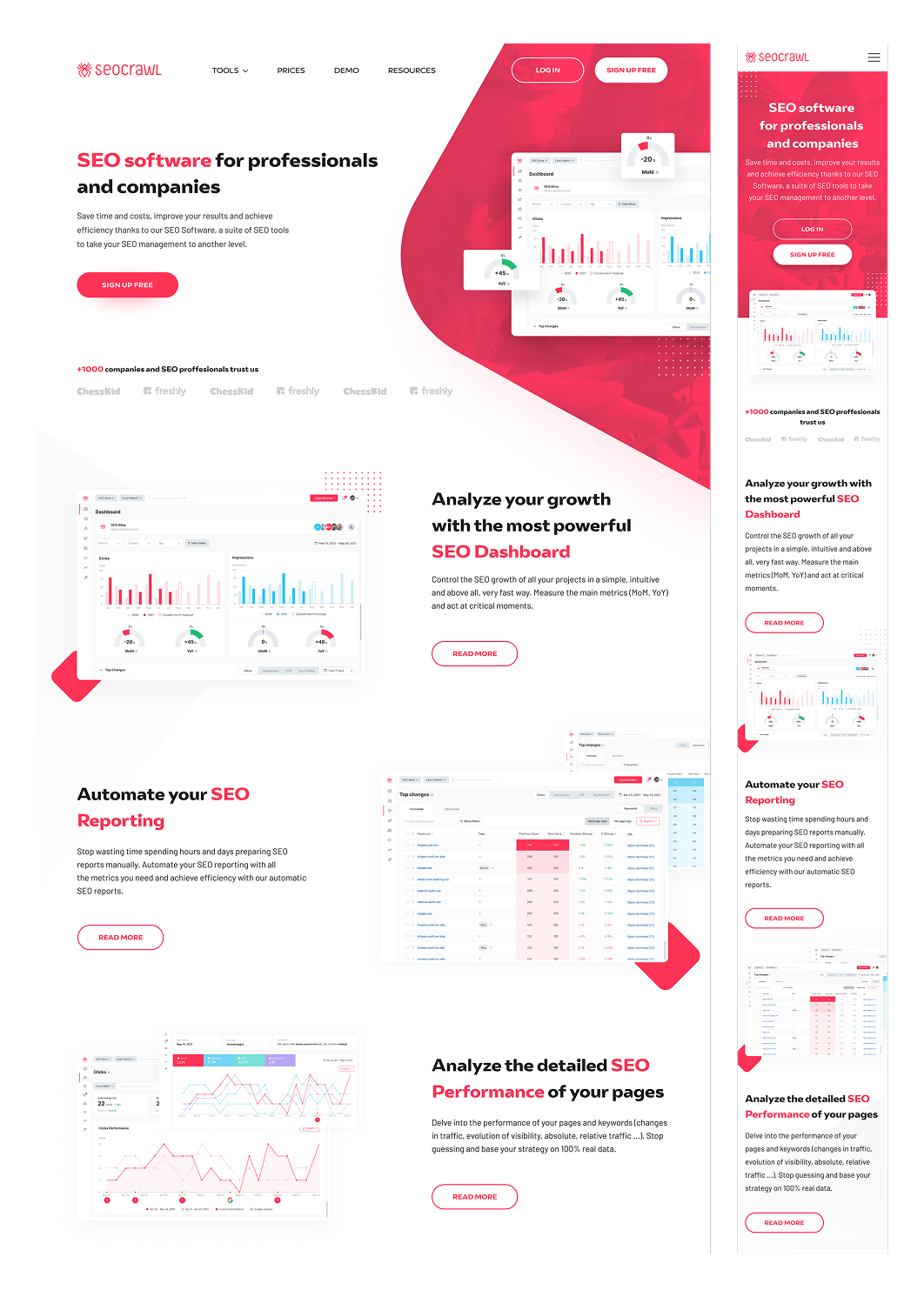
There’s nothing worse than writing the perfect copy only to find out there’s nowhere to put it. If a design has space limitations, copywriters need to know before they start writing, not after. A simple heads-up can save hours of frustrating edits and awkward text squeezing.
At TodayMade, we make sure designers and writers check in early. If a section has tight spacing, designers flag it upfront so the copy stays concise. If a layout has flexibility, writers know they have room to be more creative. It’s a small step that makes a big difference because the best design and copy don’t compete. They work together.
The way a copywriter and designer work together is changing fast. Here’s what’s driving the future of their collaboration.
AI-powered tools like ChatGPT and Midjourney can generate both text and visuals in seconds. But while AI can speed up updrafts and idea generation, it can’t replace human creativity. The future isn’t AI versus humans. It’s AI that assists copywriters and designers in working more efficiently.
More companies are investing in UX writing, the small but powerful bits of text in apps, websites, and software. Because these words need to fit seamlessly within the design, copywriters and designers must collaborate more closely than ever. This shift makes the "copy first or design first?" debate less relevant, just as email marketing design principles remind us that content and visuals are inseparable. They now happen together.
Marketing teams are increasingly relying on A/B testing to optimize performance. This means a copy can’t be set in stone. It has to evolve based on what works best. In this context, what is a marketing designer is to create layouts that allow variations, and copywriters must be ready to tweak messaging based on real-world performance data.
To keep up with these changes, copywriters and designers should:
At the same time, companies face a bigger question: Should they outsource design services or hire in-house talent? While an in-house designer offers consistency, graphic design outsourcing can be more cost-effective, especially for businesses with fluctuating needs.
However, the decision isn’t just about cost. It’s about graphic design costs & strategy. A well-planned approach ensures you get the best value without sacrificing quality. When choosing between freelance vs. agency design, factors like budget, project complexity, and long-term needs all come into play. Both options have strengths; the right choice depends on what works best for your business.
Here’s how freelance designers, design agencies, and TodayMade services compare.
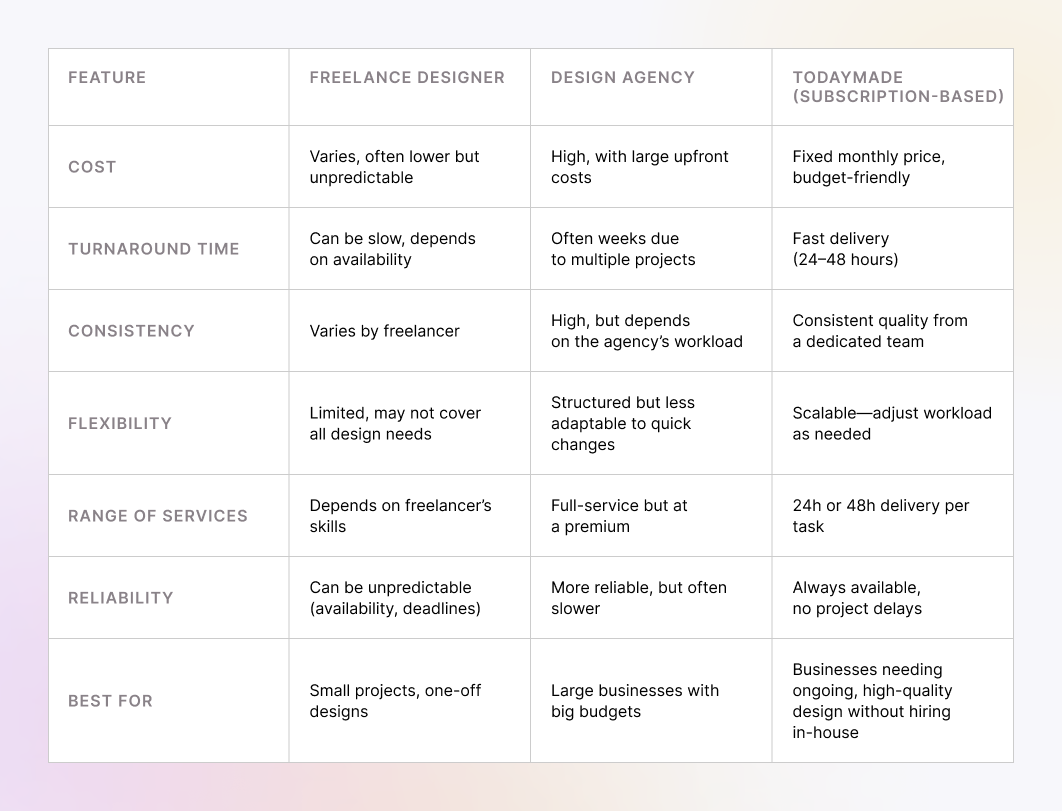
With TodayMade, you get the best of both worlds: agency-level quality with freelancer-like flexibility, all for a fixed monthly price and fast turnaround times.
Great marketing happens when copy and design work together—not when one gets squeezed in as an afterthought.
The best teams don’t waste time arguing whether copy or design comes first. Instead, they focus on early collaboration, structured feedback, and flexible workflows. Whether working in real-time or refining in iterations, the goal is to create seamless, compelling content with fewer headaches.
As AI, UX writing, and data-driven design reshape the industry, the relationship between copy and design will only grow stronger. Teams that embrace this shift by cross-training, using the right tools, and staying adaptable will produce the most effective, engaging work, which is true whether you’re working with a freelance graphic designer vs agency.
At TodayMade, we see web design and copywriting as partners, not competitors. That’s why our dedicated marketing designers integrate seamlessly with your team without the hassle of hiring in-house.
With our subscription-based service, you get a full team of professionals for a fixed monthly price, delivering everything from logos to landing pages.
While in-house hiring takes months, TodayMade delivers in just 24-48 hours. Plus, delays due to vacations or last-minute changes are never a problem — a key benefit for companies managing time-sensitive marketing design.
If you're a marketing specialist looking for high-quality design services at a predictable cost, reach out today and see how TodayMade can fuel your marketing campaigns.


